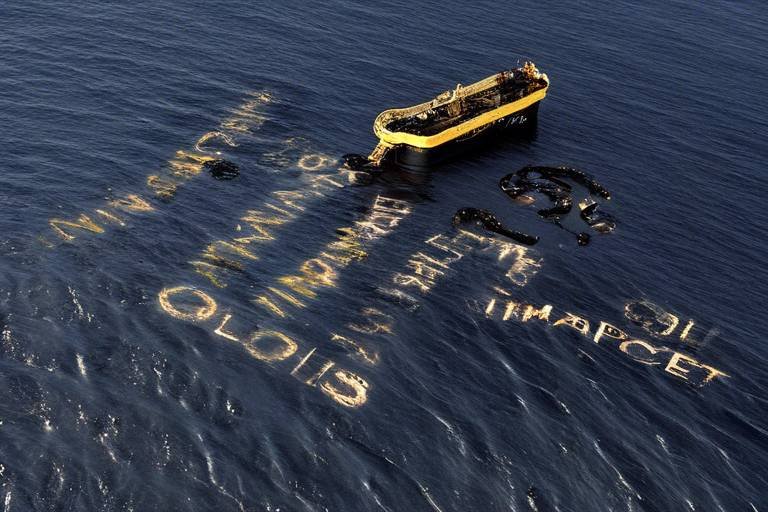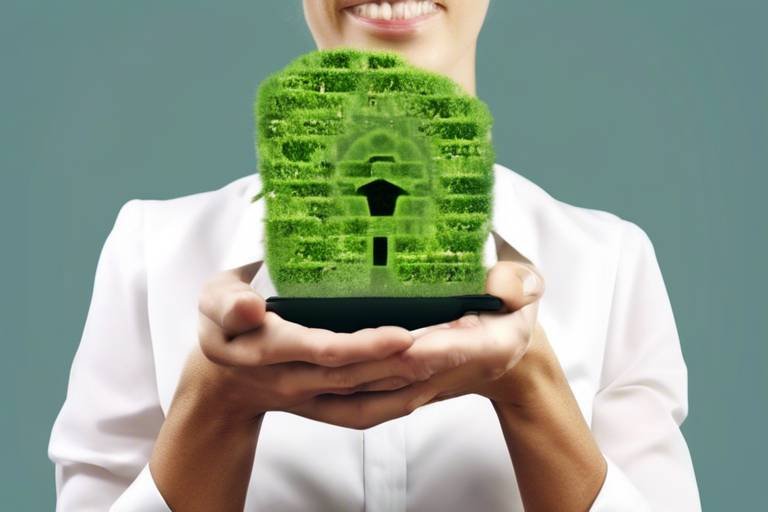The Importance of Wildlife Conservation in Sustainable Living
In a world where the hustle and bustle of daily life often overshadows the beauty of nature, it's easy to forget the critical role wildlife conservation plays in our lives. Imagine a world where the vibrant colors of a rainforest are replaced by barren landscapes, where the sweet songs of birds are silenced, and where the delicate balance of our ecosystems is disrupted. This is not just a hypothetical scenario; it’s a reality we could face if we neglect the importance of wildlife conservation. By protecting wildlife and their habitats, we are not only preserving the natural world but also ensuring our own survival and well-being.
Wildlife conservation is fundamental to achieving sustainable living. It’s about recognizing that we are part of a larger ecosystem, where every species, no matter how small, plays a vital role. When we conserve wildlife, we are also conserving the biodiversity that supports our planet. This biodiversity is essential for ecosystem resilience, allowing nature to adapt to changes and continue to provide the services we rely on, such as clean air, water, and food. Without these services, our quality of life would diminish significantly.
Moreover, the interdependence between humans and wildlife is profound. Think of it this way: just as a spider weaves its web, connecting various strands to create a strong structure, every species interacts with others to form a complex web of life. When one strand is damaged, the entire web can collapse. Thus, wildlife conservation is not just an environmental issue; it’s a matter of human survival. By ensuring that wildlife thrives, we are safeguarding our own future.
In the face of challenges such as climate change, pollution, and habitat destruction, the need for effective wildlife conservation strategies has never been more urgent. It requires a collaborative effort among governments, NGOs, local communities, and individuals. Each of us has a role to play, whether it’s through supporting conservation initiatives, reducing our ecological footprint, or simply appreciating the beauty of nature around us. Together, we can create a sustainable future where both wildlife and humans coexist harmoniously.
As we delve deeper into this topic, we will explore the interconnectedness of ecosystems, the importance of biodiversity, and the various strategies we can employ to protect our planet’s wildlife. The journey toward sustainable living is a shared responsibility, and every action counts. Let’s take this journey together and ensure that future generations inherit a world rich in biodiversity and natural beauty.
- Why is wildlife conservation important? Wildlife conservation is essential for maintaining biodiversity, ecosystem health, and human well-being. It helps ensure that natural resources are available for future generations.
- What are the main threats to wildlife? Major threats include habitat destruction, pollution, climate change, poaching, and invasive species.
- How can I get involved in wildlife conservation? You can participate by volunteering with local conservation organizations, supporting wildlife-friendly products, and spreading awareness about conservation issues.
- What role do protected areas play in wildlife conservation? Protected areas safeguard habitats and ecosystems, allowing wildlife to thrive without human interference.

Understanding Biodiversity
Biodiversity, a term that rolls off the tongue but carries immense weight, refers to the variety of life on Earth. This includes the myriad of species, ecosystems, and genetic variations that make our planet a vibrant tapestry of life. Imagine walking through a dense forest, where every rustle in the leaves might be a squirrel or a bird, each playing its part in a grand symphony of existence. This diversity is not just beautiful; it's essential for the resilience of ecosystems and, ultimately, for our survival.
Why is biodiversity so crucial? Well, think of it as a safety net. The more diverse an ecosystem is, the better it can withstand environmental changes and challenges. If one species faces a decline, others can fill its role, maintaining balance. This interconnectedness means that every species, no matter how small, contributes to the health of our planet. From the tiniest microorganisms in the soil to the majestic whales in the ocean, each plays a unique role in sustaining life.
Moreover, biodiversity offers numerous benefits to humanity. It provides us with essential resources such as food, medicine, and clean water. For instance, did you know that nearly 75% of the world’s food crops rely on animal pollinators? Without bees, butterflies, and birds, our plates would look quite empty! Furthermore, the genetic diversity found within species is vital for developing crops that can withstand diseases and changing climates.
However, biodiversity is under threat. Human activities such as deforestation, pollution, and climate change are wreaking havoc on natural habitats. This not only endangers countless species but also jeopardizes the very services that ecosystems provide. To illustrate, consider the following table that highlights some key benefits of biodiversity and the risks associated with its loss:
| Benefits of Biodiversity | Risks of Biodiversity Loss |
|---|---|
| Food Security | Increased vulnerability to pests and diseases |
| Medicinal Resources | Loss of potential new medicines |
| Climate Regulation | Increased greenhouse gas emissions |
| Soil Fertility | Decreased agricultural productivity |
In conclusion, understanding biodiversity is not just about appreciating the beauty of nature; it's about recognizing its vital role in our lives. We must act to protect it, ensuring that future generations can enjoy the same rich and diverse world we do today. After all, when we safeguard biodiversity, we are also safeguarding our own future.
What is biodiversity?
Biodiversity refers to the variety of life on Earth, including different species, ecosystems, and genetic variations.
Why is biodiversity important?
Biodiversity is crucial for ecosystem resilience, providing essential services such as food, clean water, and medicine.
What are the main threats to biodiversity?
Main threats include habitat destruction, pollution, climate change, and overexploitation of resources.
How can we protect biodiversity?
Protecting biodiversity involves habitat preservation, establishing protected areas, and engaging local communities in conservation efforts.

The Role of Ecosystems
Ecosystems are the intricate web of life that sustains our planet. They are not just a collection of plants and animals; rather, they are dynamic systems where every organism plays a crucial role. Think of an ecosystem as a finely tuned orchestra, where each instrument contributes to the overall harmony. When one part of this system is disrupted, it can lead to a cascade of effects that impact everything from local wildlife to human populations.
At the heart of this interconnectedness are the vital services that ecosystems provide. These services are essential for our survival and well-being, including:
- Clean Air: Forests and wetlands act as natural air filters, absorbing carbon dioxide and releasing oxygen, which is crucial for life.
- Water Purification: Ecosystems like wetlands and rivers naturally filter pollutants, ensuring that we have access to clean drinking water.
- Pollination: Many crops depend on animals, particularly bees and butterflies, for pollination. Without these creatures, our food systems would collapse.
Moreover, ecosystems contribute to climate regulation, soil fertility, and disease control. For instance, forests can help moderate temperatures and regulate rainfall patterns, making them critical in the fight against climate change. When we protect ecosystems, we are not just saving wildlife; we are also safeguarding our own future.
However, the delicate balance of these systems is under threat from various human activities. Urbanization, agriculture, and pollution can lead to habitat destruction and biodiversity loss. To illustrate, consider the alarming rate at which rainforests are being cleared. Each year, we lose millions of acres of these vital ecosystems, which not only harbors countless species but also plays a significant role in global oxygen production and carbon storage.
To combat these challenges, we must prioritize ecosystem conservation. This means not only protecting existing habitats but also restoring degraded areas. Restoration can involve replanting native species, removing invasive plants, and rehabilitating natural waterways. These efforts are akin to healing a wound; with time and care, ecosystems can recover and flourish again.
In conclusion, the role of ecosystems extends far beyond the immediate environment. They are foundational to our survival and well-being, providing essential services that sustain life on Earth. As stewards of the planet, it is our responsibility to ensure that these ecosystems remain healthy and intact for future generations. By recognizing their value, we can take meaningful steps toward protecting our natural world.
- What is an ecosystem? An ecosystem is a community of living organisms interacting with their physical environment, including plants, animals, microorganisms, and the air, water, and soil around them.
- Why are ecosystems important? Ecosystems provide essential services such as clean air, water purification, pollination, and climate regulation, which are vital for human survival.
- How can we protect ecosystems? Protecting ecosystems can involve establishing protected areas, restoring degraded habitats, and implementing sustainable practices in agriculture and urban development.

Habitat Preservation
Preserving habitats is not just an environmental concern; it's a moral obligation we have towards our planet and future generations. Think of habitats as the homes of countless species, each uniquely adapted to their surroundings. When we destroy these homes through urban development, deforestation, or pollution, we are not only jeopardizing the survival of those species but also disrupting the delicate balance of our ecosystems. Imagine a world where the vibrant chorus of birdsong is replaced by silence; that’s the future we risk if we don’t take action.
One of the most effective ways to ensure habitat preservation is through the establishment of protected areas. These regions are designated to safeguard biodiversity and allow ecosystems to function without human interference. By creating national parks, wildlife reserves, and marine protected areas, we can provide a sanctuary for endangered species and maintain the ecological processes that sustain life. For instance, national parks not only protect wildlife but also serve as vital resources for education and recreation, fostering a connection between people and nature.
However, merely setting aside land is not enough. We must actively engage in restoration efforts to rehabilitate degraded ecosystems. This involves a multifaceted approach that includes:
- Reintroducing native species: Bringing back species that have been lost from an ecosystem can help restore balance and promote biodiversity.
- Removing invasive species: These non-native species can outcompete local flora and fauna, leading to a decline in biodiversity.
- Restoring natural habitats: This can involve replanting native vegetation, restoring wetlands, and cleaning up polluted areas.
Moreover, habitat preservation is deeply intertwined with human well-being. Healthy ecosystems provide essential services such as clean air, water filtration, and fertile soil. When we protect habitats, we are not just conserving wildlife; we are also ensuring that our own needs are met. For example, forests act as natural air purifiers, absorbing carbon dioxide and releasing oxygen, which is crucial for our survival. In this way, habitat preservation is a win-win situation, benefiting both the environment and humanity.
In conclusion, habitat preservation is a critical component of wildlife conservation that requires our immediate attention. By recognizing the importance of protecting natural environments and actively participating in restoration efforts, we can create a sustainable future where both wildlife and humans can thrive. The choices we make today will echo through generations, shaping the world we leave behind. So, let’s take a stand and be the guardians of our planet!
Q: Why is habitat preservation important?
A: Habitat preservation is crucial for maintaining biodiversity, supporting ecosystem services, and ensuring the survival of various species, including humans.
Q: What are protected areas?
A: Protected areas are designated regions that safeguard natural habitats and wildlife from human activities, allowing ecosystems to function naturally.
Q: How can I get involved in habitat preservation?
A: You can participate in local conservation efforts, volunteer with environmental organizations, or support legislation aimed at protecting natural habitats.

Protected Areas
Protected areas are like the lifeboats of our planet, designed to safeguard the delicate balance of nature and preserve the rich tapestry of biodiversity that exists within them. These regions, which include national parks, wildlife reserves, and marine protected areas, play a crucial role in wildlife conservation by providing safe havens for countless species. By restricting human activities that can lead to habitat destruction, these areas allow ecosystems to thrive, enabling flora and fauna to flourish in their natural environments.
One of the most significant benefits of establishing protected areas is the preservation of endangered species. Many animals and plants are on the brink of extinction due to habitat loss, climate change, and human encroachment. By creating designated zones where these species can live and reproduce without the threat of human interference, we give them a fighting chance. For instance, the establishment of the Yellowstone National Park has been instrumental in protecting the American bison and grizzly bear populations, allowing them to rebound from the brink of extinction.
Moreover, protected areas contribute to the overall health of the planet. They serve as critical carbon sinks, absorbing carbon dioxide from the atmosphere and helping to mitigate climate change. Additionally, they play a vital role in maintaining clean water supplies and regulating local climates. For example, forests within protected areas act as natural water filters, trapping pollutants and ensuring that the water flowing into rivers and lakes remains clean and safe for both wildlife and human consumption.
However, the effectiveness of protected areas can be compromised by various challenges, including illegal poaching, encroachment from agriculture, and climate change. To combat these threats, it is essential to implement strong management practices and engage local communities in conservation efforts. When communities understand the importance of these areas and their role in protecting them, they become active participants in conservation, ensuring that these vital ecosystems are preserved for future generations.
In conclusion, protected areas are indispensable for wildlife conservation and the health of our planet. They not only safeguard biodiversity but also provide essential ecosystem services that benefit humanity. By prioritizing the establishment and effective management of these regions, we can create a sustainable future where both wildlife and humans can coexist harmoniously.
- What are protected areas? Protected areas are designated regions that are set aside to conserve wildlife and natural resources, limiting human activities that could harm the environment.
- Why are protected areas important? They help preserve biodiversity, protect endangered species, and provide essential ecosystem services, such as clean air and water.
- How do protected areas benefit local communities? By promoting ecotourism and sustainable resource management, protected areas can provide economic opportunities for local communities while ensuring the conservation of their natural heritage.
- What challenges do protected areas face? Challenges include illegal poaching, habitat encroachment, and climate change, which can undermine their effectiveness in conserving biodiversity.

Restoration Efforts
Restoration efforts are an essential part of wildlife conservation, acting as a beacon of hope in our quest to revive ecosystems that have suffered from human impact. When we talk about restoration, we're not just referring to planting a few trees or cleaning up a river; we're diving into a comprehensive approach that seeks to rehabilitate entire ecosystems. Think of it like giving nature a much-needed makeover—bringing back its beauty and functionality.
One of the most effective strategies in restoration is the reintroduction of native species. These species are like the puzzle pieces that fit perfectly into their ecological niche, helping to restore balance and health to their environment. For instance, when wolves were reintroduced to Yellowstone National Park, the entire ecosystem began to flourish again. This highlights how interconnected life is; when one species thrives, it can lead to the revival of many others.
But restoration doesn't just stop at reintroducing species. It often involves a multi-faceted approach that includes:
- Habitat Restoration: This means restoring the physical environment, such as wetlands, forests, and grasslands, to their natural state. It’s like turning back the clock to a time when ecosystems were thriving.
- Soil Rehabilitation: Healthy soil is the foundation of a vibrant ecosystem. Restoration efforts often include improving soil quality to support plant growth and, consequently, the animals that depend on those plants.
- Water Management: Clean and abundant water sources are crucial for all life forms. Restoration projects frequently focus on improving water quality and availability, ensuring that both wildlife and humans can thrive.
Another critical aspect of restoration is community involvement. Engaging local communities not only helps to ensure the success of restoration projects but also fosters a sense of ownership and pride in the natural environment. When people see the tangible benefits of their efforts—like cleaner rivers or flourishing wildlife—they're more likely to become lifelong advocates for conservation.
In summary, restoration efforts are not just about fixing what has been broken; they are about creating a sustainable future where ecosystems can thrive alongside human development. By reintroducing native species, restoring habitats, and engaging communities, we can make a significant positive impact on our planet. The journey of restoration is a testament to resilience and the power of collective action, reminding us that when we work together, we can heal the Earth.
Q1: What is wildlife restoration?
Wildlife restoration involves rehabilitating ecosystems to support native species and restore ecological balance. This can include habitat restoration, species reintroduction, and community engagement.
Q2: Why is it important to restore ecosystems?
Restoring ecosystems is vital for maintaining biodiversity, enhancing ecosystem services, and ensuring that both wildlife and human populations can thrive in a sustainable environment.
Q3: How can I get involved in restoration efforts?
You can participate in local conservation groups, volunteer for restoration projects, or support organizations that focus on wildlife conservation and habitat restoration.

Human Impact on Wildlife
The relationship between humans and wildlife is a double-edged sword, one that has the potential to either foster a thriving ecosystem or lead to devastating consequences. As our population grows and our demands on the planet increase, the impact of our activities on wildlife becomes more pronounced. From deforestation to pollution and climate change, human actions are significantly altering habitats and threatening species survival.
One of the most alarming effects of human activity is habitat destruction. When forests are cleared for agriculture or urban development, countless species lose their homes. This not only leads to the immediate loss of biodiversity but also disrupts the delicate balance of ecosystems. For instance, when a forest is cut down, it can lead to soil erosion, decreased air quality, and the loss of pollinators, which are essential for food production. The ripple effect is profound, affecting not just wildlife but also human communities that rely on these ecosystems for their livelihoods.
Moreover, pollution poses a significant threat to wildlife. Contaminants such as plastics, chemicals, and heavy metals enter our waterways and landscapes, impacting the health of various species. For example, aquatic life suffers immensely from water pollution, leading to declines in fish populations that are crucial for both ecological balance and human consumption. It’s a stark reminder that our waste doesn’t just disappear; it affects the very fabric of life on Earth.
Climate change is yet another factor that exacerbates the plight of wildlife. As temperatures rise and weather patterns shift, many species struggle to adapt. For instance, polar bears are losing their sea ice habitat due to warming temperatures, making it increasingly difficult for them to hunt seals, their primary food source. The changing climate also affects migration patterns, breeding seasons, and food availability, creating a cascade of challenges for wildlife.
To illustrate the impact of these human activities, consider the following table that highlights some key statistics:
| Human Activity | Impact on Wildlife |
|---|---|
| Deforestation | Loss of habitat for 80% of terrestrial species |
| Pollution | Decline in aquatic species by 50% in polluted waters |
| Climate Change | Threat to 1 million species at risk of extinction |
As we look at the bigger picture, it’s clear that our actions have far-reaching consequences. The challenge lies in finding a balance between human development and wildlife conservation. By understanding the extent of our impact, we can begin to implement changes that promote a more sustainable coexistence. This means adopting practices that not only protect wildlife but also enhance our own quality of life.
In conclusion, the human impact on wildlife is profound and multifaceted. It is imperative that we take responsibility for our actions and strive to mitigate the damage we have caused. Whether through conservation efforts, sustainable practices, or simply being more mindful of our choices, every effort counts. Together, we can create a future where both humans and wildlife can thrive.
- What are the main causes of wildlife decline? The main causes include habitat destruction, pollution, climate change, and overexploitation of resources.
- How can individuals help in wildlife conservation? Individuals can help by reducing waste, supporting conservation organizations, and advocating for policies that protect wildlife.
- What role do protected areas play in conservation? Protected areas serve as safe havens for wildlife, allowing ecosystems to function without human interference.

Conservation Strategies
When it comes to protecting our planet's wildlife, effective are not just beneficial—they're essential. The delicate balance between human needs and wildlife protection requires a multifaceted approach that brings together various stakeholders. Think of it as a team sport: everyone has a role to play, from governments to local communities, and even everyday individuals. By working together, we can create a sustainable future where both humans and wildlife can thrive.
One of the key elements of these strategies is the collaboration between different organizations. Governments, non-governmental organizations (NGOs), and local communities must join forces to develop plans that are not only effective but also practical. For instance, consider a community that relies on fishing for its livelihood. By implementing sustainable fishing practices and protecting fish habitats, both the community's economy and the local ecosystem can benefit. This is a classic case of win-win!
Another vital aspect is community involvement. When local people are engaged in conservation efforts, they often become passionate stewards of their environment. This sense of ownership can lead to innovative solutions tailored to specific challenges faced by their ecosystems. For example, in some regions, local communities have successfully implemented programs to monitor wildlife populations, which has resulted in a noticeable recovery of endangered species. When people feel connected to their natural surroundings, they are more likely to protect them.
Additionally, robust legislation and policy play a crucial role in wildlife conservation. Laws designed to protect endangered species and their habitats are fundamental in mitigating human impacts. These regulations can take many forms, including:
- Establishing protected areas to safeguard critical habitats.
- Implementing sustainable land-use practices that minimize habitat destruction.
- Creating penalties for poaching and illegal wildlife trade.
Such laws not only help preserve biodiversity but also promote public awareness about the importance of conservation. When people understand the risks associated with losing species and habitats, they are more likely to support conservation initiatives.
Furthermore, education and outreach are integral components of successful conservation strategies. By raising awareness about the importance of wildlife and ecosystems, we can inspire action. Schools, community organizations, and media campaigns can play pivotal roles in informing the public about conservation issues. Imagine a world where every child learns about the wonders of biodiversity and the importance of protecting it—this is how we can cultivate a generation of conservationists!
Finally, it's essential to monitor and evaluate conservation efforts continually. By assessing the effectiveness of various strategies, we can adapt and improve them over time. This iterative process ensures that we remain responsive to changing environmental conditions and emerging threats. In this way, conservation becomes a dynamic and evolving practice, much like a living organism that adapts to its environment.
Q: Why is community involvement important in conservation?
A: Community involvement fosters a sense of ownership and responsibility, leading to more effective and sustainable conservation efforts.
Q: What role do laws play in wildlife conservation?
A: Laws protect endangered species and habitats, mitigate human impacts, and promote public awareness about the importance of biodiversity.
Q: How can education help in conservation efforts?
A: Education raises awareness and inspires action, cultivating a new generation of individuals who value and protect wildlife and ecosystems.

Community Involvement
Community involvement in wildlife conservation is not just a nice-to-have; it’s a necessity for achieving sustainable living. Imagine a world where local communities actively participate in protecting their natural resources, understanding that their well-being is intertwined with the health of their environment. When communities feel a sense of ownership over their surroundings, they are more likely to engage in practices that promote biodiversity and ecosystem health. This connection is crucial, as it fosters a culture of stewardship, where people take pride in their role as guardians of the planet.
One of the most effective ways to encourage community involvement is through education and awareness programs. By informing residents about the importance of wildlife conservation and the specific threats their local ecosystems face, communities can become empowered to take action. These programs can be implemented in schools, local organizations, and even through social media campaigns. When people understand the direct impact of their actions on wildlife, they are more inclined to change their behaviors.
Additionally, community-led initiatives can be incredibly effective. For example, local groups might organize clean-up days, tree planting events, or wildlife monitoring projects. These activities not only help the environment but also strengthen community bonds. Participants often find joy in working together towards a common goal, which can lead to lasting friendships and a more cohesive community. Here are some examples of community initiatives:
- Adopt-a-Park Programs: Communities can take responsibility for maintaining local parks, ensuring they remain clean and welcoming for both wildlife and visitors.
- Wildlife Watch Programs: Local residents can participate in monitoring wildlife populations, reporting sightings, and contributing to citizen science projects.
- Educational Workshops: Hosting workshops on sustainable practices, such as gardening with native plants or reducing plastic use, can help raise awareness about biodiversity.
Moreover, collaboration with local governments and NGOs is essential for maximizing the impact of community efforts. When these groups work together, they can provide the necessary resources, expertise, and funding to support grassroots initiatives. This partnership can also help in developing policies that reflect the needs and values of the community, ensuring that conservation efforts are both effective and culturally relevant.
In essence, community involvement in wildlife conservation is about creating a synergy between people and nature. It’s about recognizing that our lives are deeply connected to the health of our ecosystems. When communities take an active role in conservation, they not only protect wildlife but also enhance their quality of life. The more we engage with our environment and understand the significance of biodiversity, the more resilient we become as a society. So, let’s roll up our sleeves and get involved—because together, we can make a difference!
Q: Why is community involvement important for wildlife conservation?
A: Community involvement is crucial because it fosters a sense of ownership and responsibility towards local ecosystems. When communities actively participate in conservation efforts, they are more likely to protect their natural resources, leading to sustainable living.
Q: How can I get involved in local conservation efforts?
A: You can start by attending local meetings, joining conservation groups, or participating in community events focused on environmental protection. Many organizations also offer volunteer opportunities that allow you to contribute directly to conservation projects.
Q: What are some examples of successful community conservation initiatives?
A: Successful initiatives include community-led wildlife monitoring programs, tree planting events, and educational workshops aimed at raising awareness about local biodiversity and conservation needs.

Legislation and Policy
When we talk about wildlife conservation, one of the most critical components that often comes to mind is the role of . These frameworks are the backbone of conservation efforts, providing the necessary legal protection for endangered species and their habitats. Without robust laws, the delicate balance of our ecosystems can easily tip into chaos, leading to the extinction of species and the degradation of natural habitats.
Imagine a world where there are no laws to protect our wildlife. It would be like a ship sailing without a captain, drifting aimlessly towards disaster. Legislation serves as that captain, steering us towards a sustainable future. Laws such as the Endangered Species Act in the United States and the Convention on Biological Diversity globally are examples of how governments can take decisive action to protect biodiversity. These laws not only aim to prevent extinction but also promote the recovery of threatened species.
Furthermore, effective policies must be backed by adequate funding and resources. Conservation efforts can be costly, and without financial support, even the best-laid plans can fail. Governments, NGOs, and private sectors must collaborate to secure funding for conservation programs. This includes:
- Grants for research on endangered species
- Funding for habitat restoration projects
- Support for community-based conservation initiatives
Moreover, public awareness and education play a significant role in the success of these policies. When people understand the importance of wildlife conservation, they are more likely to support laws and initiatives aimed at protecting our planet. Education campaigns can raise awareness about the impacts of human activities on wildlife and encourage sustainable practices.
In addition to national policies, international cooperation is vital. Many species migrate across borders, and their protection requires a coordinated effort among countries. Treaties and agreements, such as the Convention on International Trade in Endangered Species (CITES), help regulate trade and protect species from exploitation. These international frameworks ensure that conservation is a global priority, not just a local concern.
In conclusion, legislation and policy are essential for the conservation of wildlife. They provide the legal framework needed to protect endangered species, promote biodiversity, and ensure that future generations can enjoy the rich tapestry of life on Earth. As we continue to face environmental challenges, it is crucial that we advocate for strong laws and policies that prioritize the health of our ecosystems and the diverse species that inhabit them.
- What is the purpose of wildlife conservation legislation?
The primary purpose is to protect endangered species and their habitats, ensuring biodiversity and ecosystem health.
- How can I get involved in wildlife conservation efforts?
You can participate by supporting local conservation organizations, volunteering for habitat restoration projects, or advocating for policies that protect wildlife.
- What are some examples of successful wildlife conservation policies?
Examples include the Endangered Species Act in the U.S. and CITES, which regulates international trade in endangered species.
Frequently Asked Questions
- What is wildlife conservation?
Wildlife conservation is the practice of protecting animal species and their habitats. It's all about ensuring that our planet's biodiversity thrives, which is crucial for maintaining healthy ecosystems and ultimately, our own well-being.
- Why is biodiversity important?
Biodiversity is essential because it contributes to ecosystem resilience. Think of it like a safety net; the more diverse a system, the better it can withstand changes and stresses, like climate change or disease. Plus, it provides us with food, medicine, and clean air!
- How do ecosystems benefit humans?
Ecosystems offer a plethora of services that are vital for human survival. They purify our air and water, provide food, and even pollinate crops. Without healthy ecosystems, our quality of life would drastically diminish.
- What are protected areas?
Protected areas are regions set aside to conserve wildlife and their habitats. These spaces act as sanctuaries where ecosystems can thrive without human interference, helping to maintain biodiversity and ecological balance.
- How can habitat preservation help wildlife?
Habitat preservation is crucial because it ensures that wildlife has a safe environment to live and reproduce. When we protect natural habitats from destruction, we give species the chance to flourish and maintain their populations.
- What are some examples of conservation strategies?
Conservation strategies can include creating protected areas, restoring degraded habitats, and involving local communities in conservation efforts. These approaches help balance human needs with the protection of wildlife.
- How does human activity impact wildlife?
Human activities, such as deforestation, pollution, and climate change, have a significant negative impact on wildlife populations. These actions can lead to habitat destruction, loss of biodiversity, and even extinction of species.
- Why is community involvement important in conservation?
Community involvement is vital because local people are often the best stewards of their environment. When communities are engaged in conservation efforts, they are more likely to protect their natural resources, ensuring sustainability for future generations.
- What role does legislation play in wildlife conservation?
Legislation is crucial for protecting endangered species and their habitats. Strong laws help mitigate human impacts on wildlife and promote biodiversity conservation, creating a framework for effective conservation practices.



















